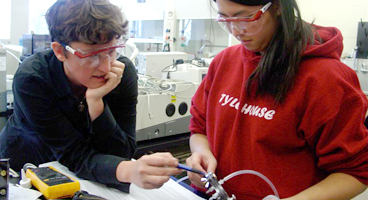Document Type
Article
Publication Date
7-2023
Publication Title
Hearing Research
Abstract
Description of the ear canal’s geometry is essential for describing peripheral sound flow, yet physical measurements of the canal’s geometry are lacking and recent measurements suggest that older-adult-canal areas are systematically larger than previously assumed. Methods to measure ear-canal geometry from multi-planar reconstructions of high-resolution CT images were developed and applied to 66 ears from 47 subjects, ages 18–90 years. The canal’s termination, central axis, entrance, and first bend were identified based on objective definitions, and the canal’s cross-sectional area was measured along its canal’s central axis in 1-2 mm increments. In general, left and right ears from a given subject were far more similar than measurements across subjects, where areas varied by factors of 2-3 at many locations. The canal areas varied systematically with age cohort at the first-bend location, where canal-based measurement probes likely sit; young adults (18-30 years) had an average area of 44 mm 2 whereas older adults (61-90 years) had a significantly larger average area of 69 mm 2. Across all subjects ages 18-90, measured means ± standard deviations included: canals termination area at the tympanic annulus 56 ± 8 mm 2; area at the canal’s first bend 53 ± 18 mm 2 ; area at the canal’s entrance 97 ± 24 mm 2 ; and canal length 31 . 4 ± 3 . 1 mm 2.
Keywords
ear canal anatomy, CT scan ear canal, age related ear canal areas
Volume
434
DOI
10.1016/j.heares.2023.108782
Creative Commons License

This work is licensed under a Creative Commons Attribution 4.0 International License.
Rights
Licensed to Smith College and distributed CC-BY under the Smith College Faculty Open Access Policy.
Version
Author's Accepted Manuscript
Recommended Citation
Balouch, Auden P.; Bekhazi, Karen; Durkee, Hannah E.; Farrar, Rebecca M.; Sok, Mealaktey; Keefe, Douglas H.; Remenschneider, Aaron K.; Horton, Nicholas J.; and Voss, Susan E., "Measurements of Ear-Canal Geometry from High-Resolution CT Scans of Human Adult Ears" (2023). Engineering: Faculty Publications, Smith College, Northampton, MA.
https://scholarworks.smith.edu/egr_facpubs/143


